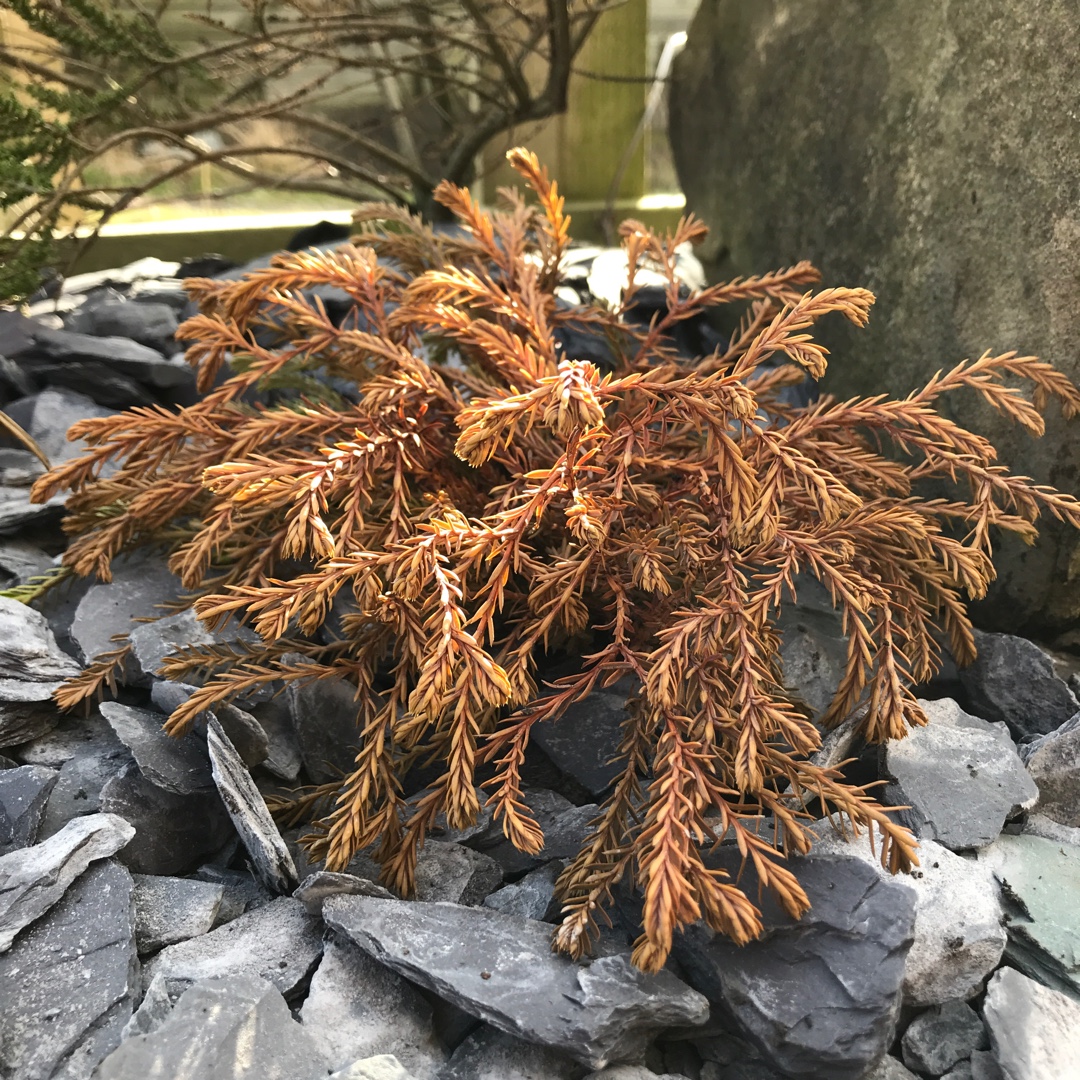
Thuja occidentalis 'Golden Tuffet'
White Cedar 'Golden Tuffet'
Thuja occidentalis, is a small to medium-sized evergreen conifer, which is also known as northern white-cedar, or eastern arborvitae. It has a reddish-brown bark that peels in vertical strips. In unfavourable positions, the tree will grow prostrate. 'Golden Tuffet' is a very slow-growing, small conifer, with young foliage that is green in the centre of the plant but mostly yellow-edged golden orange in Summer, and bronze in Winter.
Contributed by @dammers1981
-
Full sun
-
Occasional watering
-
Full Frost Hardy: 5F (-15°C)
-
All soil conditions
Common name
White Cedar 'Golden Tuffet'
Latin name
Thuja occidentalis 'Golden Tuffet'
type
Trees or Shrubs
family
Cupressaceae
ph
5.6 - 7.9 Acid - Neutral
Plant & bloom calendar
-
Best time to plant
full grown dimensions
 0.80 M
0.60 M
0.80 M
0.60 M
Thuja occidentalis 'Golden Tuffet'
Thuja occidentalis, is a small to medium-sized evergreen conifer, which is also known as northern white-cedar, or eastern arborvitae. It has a reddish-brown bark that peels in vertical strips. In unfavourable positions, the tree will grow prostrate. 'Golden Tuffet' is a very slow-growing, small conifer, with young foliage that is green in the centre of the plant but mostly yellow-edged golden orange in Summer, and bronze in Winter.
Planting
From Early Spring TO Late Spring
Locate an area with full or partial sun and well-drained soil. Thuja occidentalis prefers loamy, deep soil but will do just fine in rocky, dry and compacted soils of almost any pH without additional amendments. Dig a hole twice the width of the root ball of the plant, and at a depth about the same height as the root ball. Remove the emerald arborvitae from its container or untie the rope securing the burlap around the trunk. If the roots look matted on the edges of the root ball, untangle them with your fingers. Stand the tree in the hole and eyeball its height to make sure that the top of the root ball is even with or slightly above ground level. If it is lower, take the tree out of the hole and replace enough of the soil to bring it to the right height.
Propagation by Semi Hardwood Cuttings
From Late Summer TO Late Summer
Semi hard wood cuttings are taken from the current years growth from late summer to mid autumn the bottom of the cuttings is hard and soft on the top. With a sharp knife take a cutting of about 14 cms, remove lowest leaves, dip end into rooting hormone, and place round the edge of a pot filled with a suitable compost, water well, they must remain moist till rooted, place under glass but in semi shade. Thuja requires a well-drained potting mixture such as equal parts peat and either coarse sand or vermiculite. Dipping the bottom of the stems in rooting hormone just before planting aids rooting. Plant six or seven cuttings in a 6-inch pot, just deep enough to keep the stems upright.









